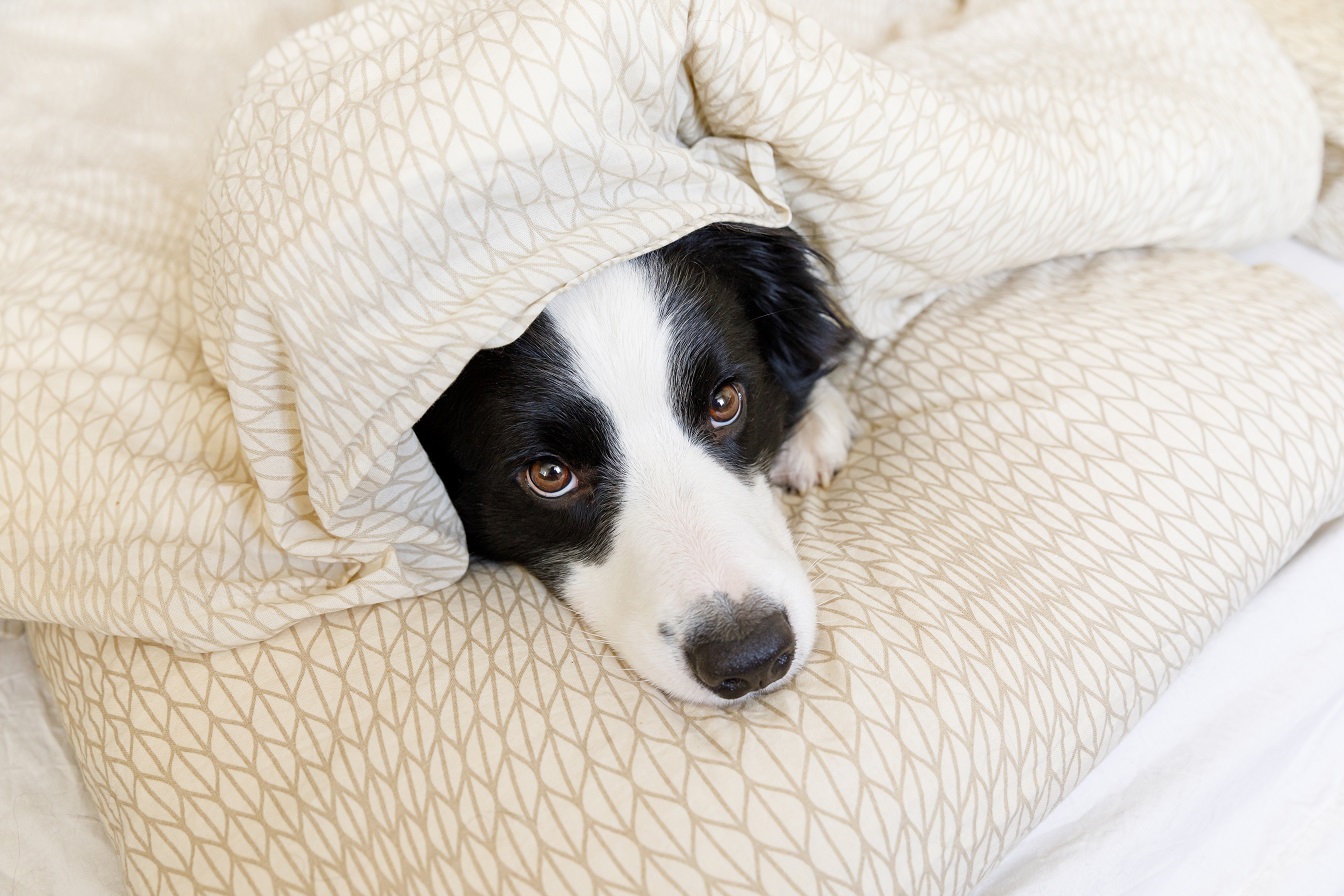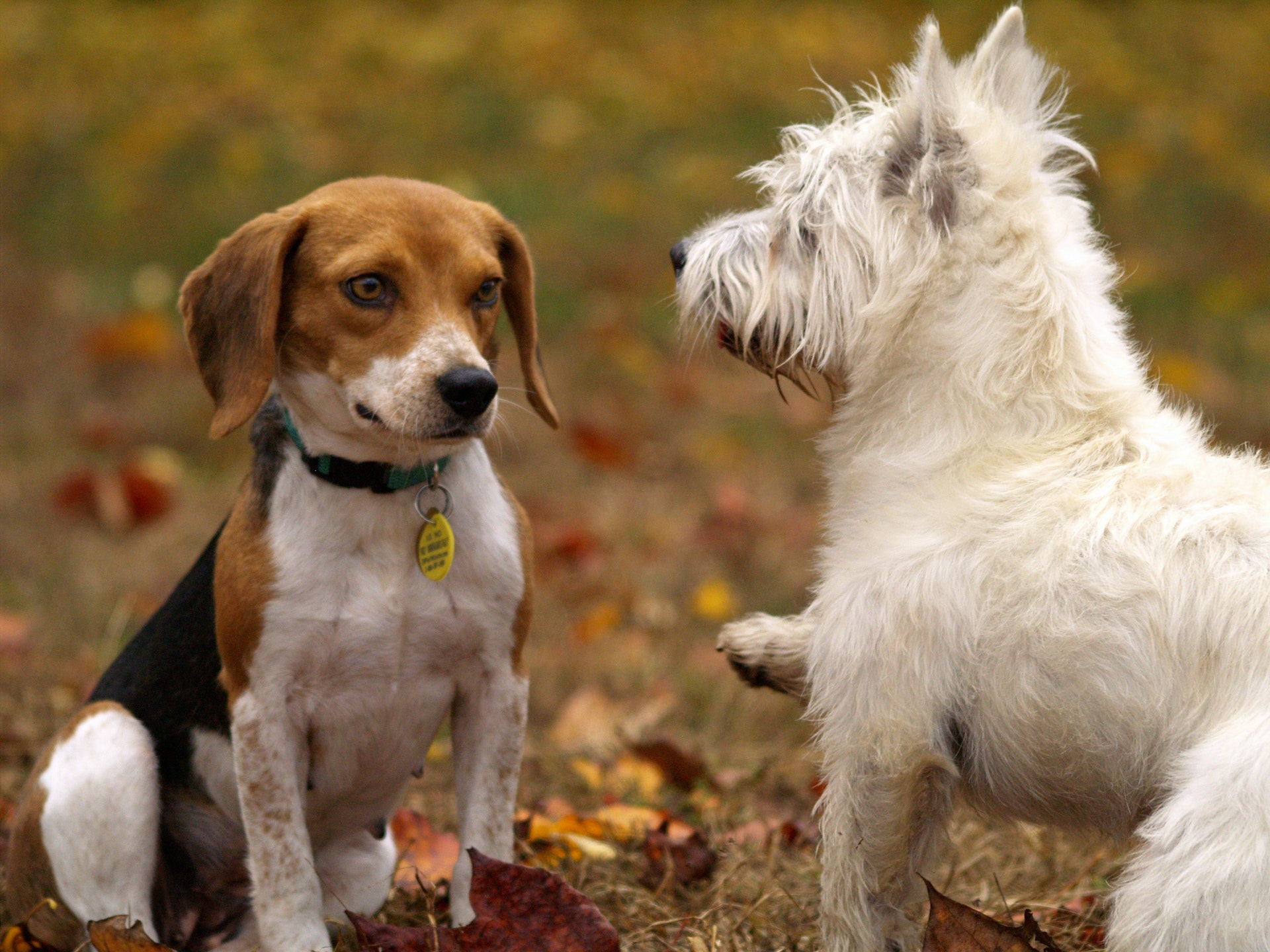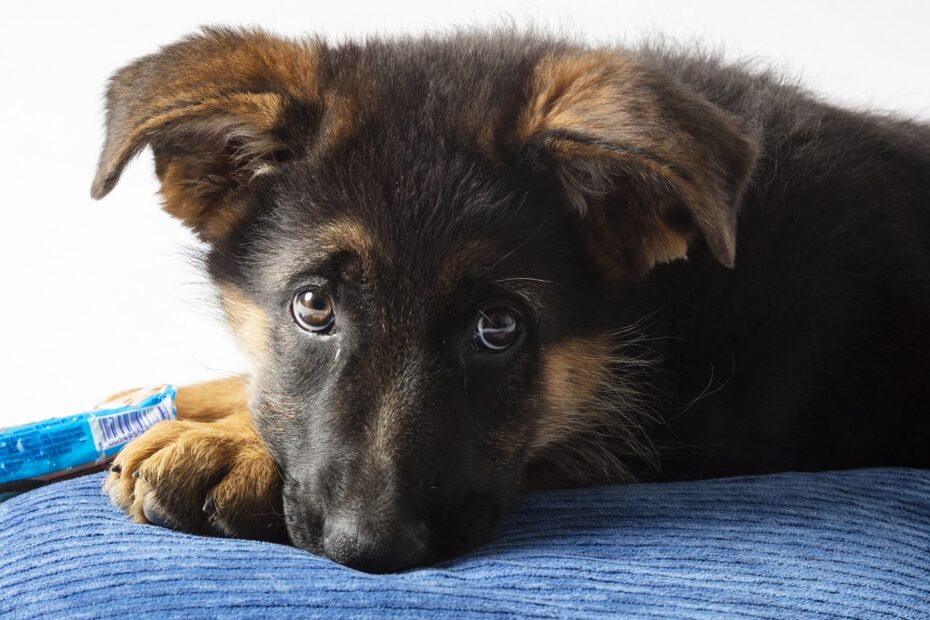Is your rescue dog afraid to go outside? If they are, they’re by no means unusual.
While the great outdoors might be a joy to most dogs, for rescue dogs, the world can be a big, scary place.
And when you think about it, it makes perfect sense.
They have no idea that they’ve found their forever home. If they came from a loving background, they’ll be confused and anxious about why they can’t return to it.
If they didn’t, they’ll have no idea that their previous life of abuse and neglect is over.
Essentially, your dog is going through some major emotions right now. They’re craving safety, security, and a sense of normalcy.
They might have found a little of that already in your home. But the world outside… well, that’s another story.
Who knows who or what awaits them on the other side of the door? Far better to hunker down and stay where it’s safe.
Your dog’s fear of the outside world might make itself known in one of several different ways. They might refuse to walk or pull on the leash to get back inside.
They might crouch or walk low to the ground, keeping their tail tucked under and displaying other signs of anxiety like trembling and panting.
And forcing them to face their fear won’t help. If anything, it’ll just exacerbate the problem.
Does that mean you just need to accept the situation?
Absolutely not.
While there’s no quick fix to overcoming the problem, understanding the reason for your dog’s fear and then addressing it with the proper training technique can make a huge difference.
Before we start looking into some of the reasons and solutions for your dog’s fear, I’d highly recommend you take a moment to watch the short video below from the Online Dog Trainer, Dan Abdelnoor.
During the video, Dan runs through 5 step-by-step calming exercises that can help any dog become a master of their emotions.
For rescue dogs plagued with anxieties and fears, the exercises can make a massive difference.
So watch the video, implement the techniques, and notice the improvement.
They might not change your life, but they’re certainly going to make it far, far easier for both you and your pooch.
Anyway, here’s the video link to take a look: 5 Step-By-Step Calming Exercise To Quickly & Permanently Eliminate Fear, Anxiety & Stress In Your Dog…
(video will open in a new window)
Why is My Rescue Dog Afraid To Go Outside?
Before you can address a problem, you need to figure out what’s causing it in the first place.
When you’re dealing with a rescue dog, that’s not always as simple as it sounds.
If you raise a dog from puppyhood, you know exactly what their life has been like.
- You know what training they’ve had (or haven’t!)
- You’ll know how well they’ve been socialized.
- And you’ll know what experiences they’ve had.
But with a rescue dog, none of that is guaranteed.
The shelter might have been able to fill you in on some details, but there’s probably a world of information you’re missing.
That doesn’t make it impossible to work out what’s driving your pet’s fears, but it does make it a little harder.
So watch your dog carefully. Check how they react in different circumstances and around different people and situations.
The more attention you pay to their reactions, the more information you’ll have to work with.
Once you’ve gathered all your intel, take a look at some of the following explanations.
Do any sound like they could be the missing piece in the puzzle?
Fear and Anxiety
Transitioning to a new home can be an overwhelming experience. It takes time for a dog to feel relaxed and at home.
Even if they’ve come from a loving background, they’ll probably feel traumatized and stressed by the experience of leaving one home for another.
It’s going to take them some take to figure out if they’re in a good place or a bad place. Until they do, you can expect them to be reluctant to engage in even enjoyable pastimes.
Poor Socialisation
A dog who isn’t socialized as a puppy can become afraid and nervous of things other dogs take in their stride.
To see the world as a welcoming place rather than a scary one, puppies need to be gently and positively exposed to a variety of people, animals, and situations before they reach 14 weeks old.
If your rescue dog wasn’t socialized in this way, they can become easily overwhelmed at any unfamiliar sights and sounds.
New Environment
Dogs like consistency. If they’re used to one particular type of environment, it can take them a while to adjust to a new one.
This applies as much to their walking environment as it does to their home environment.
Maybe they’re used to walking in rural areas and are now expected to navigate the sights and sounds of the city.
Perhaps they’re used to spending more time alone in a yard than with other dogs in a park.
Whatever the change is, don’t underestimate just how frightening it can be for a dog.
Pain
If your rescue dog is a senior, they might be experiencing the aches and pains that can often come with age.
Arthritis and other mobility problems can all make walking less of a pleasure and more a chore.
Vision and hearing loss could also be to blame: if a dog can’t hear or see what’s happening around them, they can become easily overwhelmed and anxious.
New To Leash Walking
If your rescue dog seems afraid to walk outside on the leash, it could be down to inexperience.
Dogs who’ve never been leash trained can find the experience scary.
Any negative experiences they’ve had on the leash in their past will only intensify the problem.
Related Post: 6 Reasons Your Dog Won’t Walk On The Leash And How To Fix It

How to Stop a Rescue Dog from Being Afraid
The outside world can be a source of huge pleasure and joy for a dog. But getting a rescue dog to realize that can be a challenge.
When you raise a dog from puppyhood, you get to shape their understanding of the world. When you take on a rescue dog, you take on a dog whose understanding has already been shaped.
Unfortunately, the experiences that have informed that understanding aren’t always the kind that bear thinking about.
But nothing is set in stone. Just because your dog is scared of the outside world now doesn’t mean they’re going to be that way forever.
With patience, kindness, and training, you can help your dog overcome its fears and begin seeing the world in a more positive light.
Before we start talking about the different techniques you can use to overcome the problem, take a moment to revisit those 5 step-by-step calming exercises I mentioned earlier.
If your dog is feeling so overwhelmed and fearful that even a walk outside doesn’t hold any pleasure for them, the more you can do to calm and soothe them, the better.
Once you introduce the exercises into your routine, you should notice a marked improvement in your dog’s emotional control and mental wellbeing.
Just as importantly, you’ll notice a significant difference in their ability to focus on training.
Depending on the root of your dog’s problem, you might also want to think about the following…
Give Them Time to Adjust
Don’t underestimate just how challenging the last few weeks and months have been for your pooch. They’ve been uprooted, moved around, met a bunch of unfamiliar faces, and been exposed to a hundred and one different experiences.
Overwhelmed? You don’t know the half of it. Your dog is in sensory overload.
The last thing they need now is any more pressure. So take a step back, and let them adjust to their new home and environment before you start making any major efforts to encourage them outside.
They’re going to be jumpy and nervous and unsure at first. Let them know they’re safe by keeping their environment as stress-free as possible.
Now isn’t the time to start introducing any draconian rules or intensive training sessions.
Keep your voice gentle, your movements soft, and avoid overwhelming them with too much attention.
As they begin to adjust and acclimatize, you can start working on desensitizing them to their fears.
For now, patience is the word.
Avoid Encouraging Their Fears
Leash training a rescue dog is fraught with challenges. Without knowing their backstory, you might not know if they’ve even worn a leash or collar before, let alone whether they’ve had any bad experiences with them.
Watch their behavior and body language closely. Try to pick up on any clues as to what’s making them feel frightened or threatened.
Remember to show kindness and love, no matter how frustrating it can sometimes feel.
Your dog needs to feel safe and secure in the knowledge that whatever bad experiences they’ve had in the past aren’t going to be repeated in their future.
Don’t, however, make the mistake of overwhelming your dog with so much affection, you inadvertently end up encouraging their fears.
While it’s natural to reach out to comfort and soothe a dog when they’re scared, doing so can reinforce and even validate their fears.
Instead of immediately smothering your dog with kisses and cuddles when they start to display anxiety, keep calm and steady.
Remember – dogs are empathetic. They feed off your energy. So if you can stay relaxed and calm, they’ll be more inclined to do the same.
Talking of staying calm, remember to keep practicing these 5 step-by-step calming exercises wherever possible. The more emotional control and focus you encourage, the sooner you’ll start seeing positive progress.

Don’t Force Them To Confront Their Fears
You know how they say the best way to overcome your fears is to face them?
It doesn’t work with dogs.
Forcing your dog to confront their fears before they’re ready won’t help. In fact, it could just make the problem worse.
Avoid carrying your dog outside or pulling them out by the leash.
The aim of the game is to get your dog to love going outside. Force or punishment isn’t going to do that.
Sure, it might get them outside in the short term, but in the long term, it’ll just make them even more traumatized.
To desensitize your dog to their fears, you’ll need to work in a calm, controlled environment where they feel safe, not panicked.
Change their Associations
Desensitization and counter-conditioning training can go a long way to helping your dog overcome its fears.
Desensitization works by allowing the dog to experience the cause of their fear at a level that doesn’t trigger stress. Counter conditioning can be used in conjunction with desensitization to help replace any negative associations with positive ones.
When it comes to using the methods to encourage a dog outside, you’ll need to break things down into manageable, bite-sized chunks.
Start by standing just outside the door with a bag of treats. Make sure your dog can see the treats.
When they take a step towards the door, mark the behavior with a verbal marker and reward them by tossing a treat to where they are.
Don’t try to lure your dog closer to you or force them to come to you get the treat: for the process to work, they need to be the ones to dictate the pace.
Keep practicing until they’re able to confidently cross their comfort threshold.
Socialize Them
If your dog has been conditioned to think of the world as a big, bad, scary place, it’s little wonder they want nothing to do with it.
Fortunately, there’s plenty you can do to help them realize it’s not as bad as they think it is.
Although flooding them with new experiences won’t help, gently introducing them to new people and animals can help them gain confidence.
If you have any friends with particularly placid, friendly dogs, consider setting up some playdates. Use plenty of treats to help pave the way to a successful introduction.
Don’t force your dog to approach the other dog (or your friend for that matter) until they’re ready. Watch their body language for any signs of anxiety or discomfort so you can dial things back if necessary.
It may take some time, but every new successful introduction will take you one step closer to a happier, more confident pooch.
Related Post: How To Socialize An Aggressive Dog – A Step By Step Guide

Wrapping Things Up
A puppy is a blank slate, ready to be molded and shaped. A rescue dog is anything but. They’ve already been molded and shaped, often in ways that are hard to fathom. And that’s not without its challenges.
Giving a home to a rescue dog is an amazing, commendable thing to do. But don’t for a second think it’s going to be one long holiday.
Getting your dog to feel safe, secure, and happy in their new home will take time, patience, and lots of perseverance.
Helping them overcome their fears of the outside world will require the same. But keep going. Witnessing your dog’s transformation will make all the hard work and dedication worth it.

